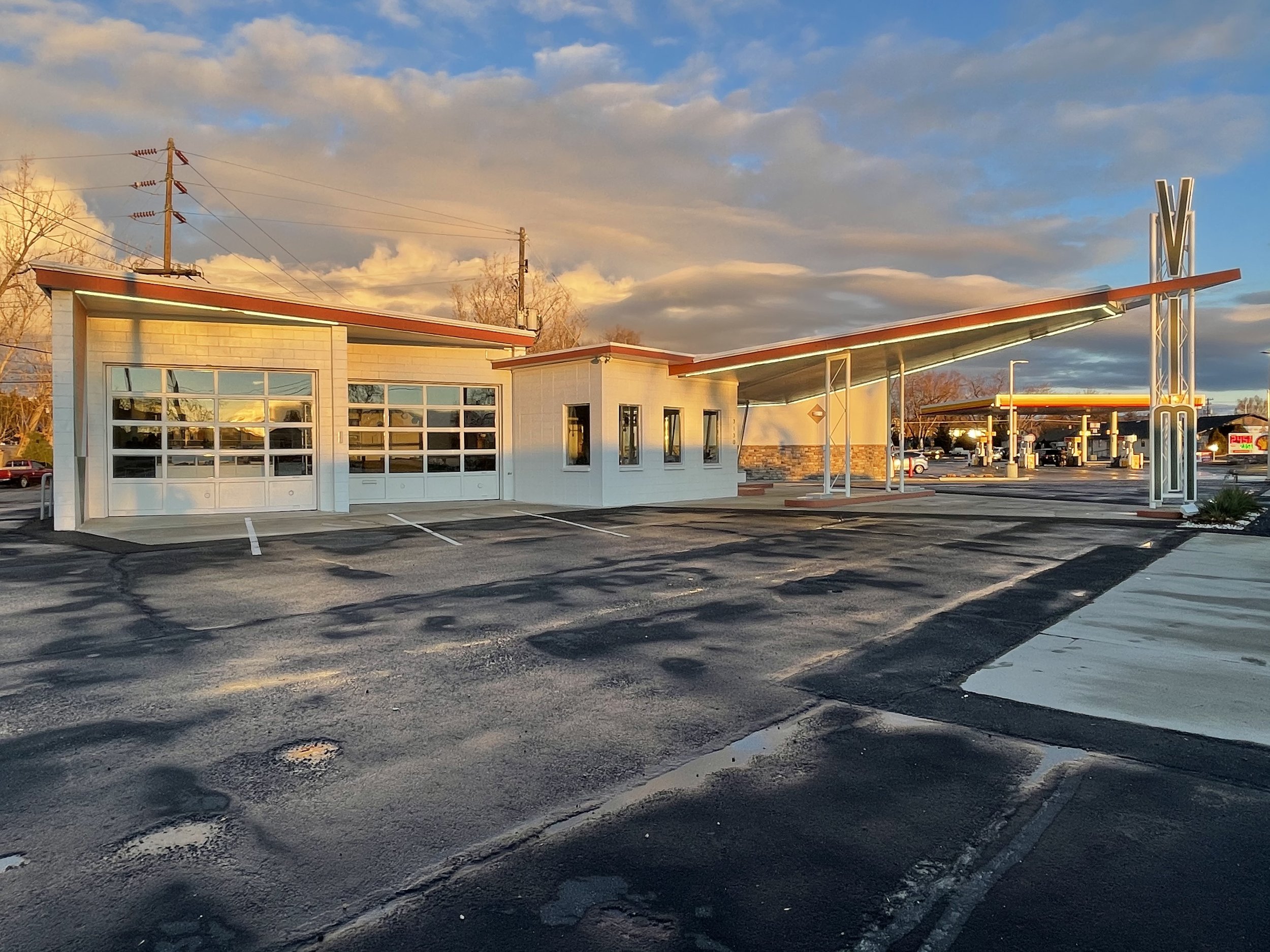Press Release: Preservation Idaho Receives National Funding
Federal historic preservation tax incentives generated $7 billion in GDP and 122,000 jobs in 2020
A beacon of mid-century auto-oriented design in Boise, Idaho, the rehabilitation of the Forty-Four & Sixty-Six Service Station was completed in 2020 and qualifies for a federal historic tax credit.
Photo courtesy of the Idaho State Historical Society
News Release Date: December 22, 2021
Contact: NewsMedia@nps.gov
WASHINGTON - According to the Rutgers University’s Center for Urban Policy Research, the Federal Historic Preservation Tax Incentives Program contributed more than $13.8 billion in output in terms of goods and services to the U.S. economy, generated approximately 122,000 jobs, and added an overall $7 billion in gross domestic product (GDP) in fiscal year 2020. The program is administered by the National Park Service (NPS) and the Internal Revenue Service (IRS), in partnership with State Historic Preservation Offices.
“Historic preservation efforts do more than maintain and showcase our nation’s history – they also support community revitalization, job creation, affordable housing, and small businesses, particularly in historically marginalized communities whose histories are integral to America’s story,” said Secretary Deb Haaland. “I am proud of the Department’s efforts to preserve our special places and ensure that future generations can learn about the rich history of every community.”
"Investments in the Federal Historic Preservation Tax Incentives Program have extensive benefits to the national economy, generating more than $195.2 billion in GDP since 1978. This incredible federal/state partnership has enabled more than 46,000 preservation and rehabilitation projects while revitalizing communities across the country,” said NPS Director Chuck Sams.
The Federal Historic Preservation Tax Incentives Program, commonly known as the Historic Tax Credit, provides a 20% federal tax credit to property owners who undertake a substantial rehabilitation of a historic building in a commercial or other income-producing use while maintaining its historic character.
The NPS certifies that a building is historic, and therefore eligible for the program, and that the rehabilitation preserves the building’s historic character. The IRS is responsible for administering the other aspects of the tax credit under the Internal Revenue Code. The tax incentives program has helped to revive abandoned or underutilized schools, warehouses, factories, churches, retail stores, apartments, hotels, houses, agricultural buildings, offices, and other buildings across the country, and, in turn, has helped support the redevelopment of entire downtowns and neighborhoods. Seventeen percent of the projects certified in Fiscal Year 2020 were located in communities of less than 25,000 people.
According to this year’s report, about half of the certified rehabilitation projects were located in low- and moderate-income areas and three-quarters of all projects were in economically distressed areas. Program-related investments created approximately 122,000 jobs, including 42,000 jobs in construction and 27,000 jobs in manufacturing, and generated $2.3 billion in construction and $2.0 billion in manufacturing respectively. As a result of both direct and multiplier effects, and due to the interconnectedness of the national economy, sectors not immediately associated with historic rehabilitation, such as agriculture, mining, transportation, and public utilities, benefited as well.
State Historic Preservation Offices are the first point of contact for information and guidance for property owners interested in the program, and the NPS works closely with them in the administration of the program. A breakdown by state of the economic impacts and other program information is included in the reports.
Fiscal Year 2020 Highlights and Reports
Annual Report on the Economic Impact of the Federal Historic Tax Credit for Fiscal Year 2020
Federal Tax Incentives for Rehabilitating Historic Buildings Annual Report for Fiscal Year 2020
Rehabilitation in Action
Forty-Four & Sixty-Six Service Station (Boise, Idaho)
Instead of demolition and sale of the land to the highest bidder, owners of the Forty-Four & Sixty-Six Service Station decided to preserve and rehabilitate the unique mid-century building for a future tenant who would appreciate the historic character of the building and sensitively adapt it to a modern use. The rehabilitation cost approximately $166,364 and received the 2020 Orchid Award for Excellence in Historic Preservation from Preservation Idaho.
Fiscal Year 2020 Highlights
Rehabilitated Housing Units
Rehabilitated new or existing housing units: 16,624
Low- and moderate-income housing units: 5,889
Economic Benefit
Total estimated rehabilitation investment (Qualified Rehabilitation Expenditures): $6.5 billion
Historic rehabilitation projects certified: 989
Estimated total jobs created: 122,000
Output (Goods and Services): $13.8 billion
Gross domestic product: $7 billion
Income created: $5.2 billion
About the National Park Service. More than 20,000 National Park Service employees care for America's 423 national parks and work with communities across the nation to help preserve local history and create close-to-home recreational opportunities. Learn more at www.nps.gov, and on Facebook, Instagram, Twitter, and YouTube.
The Schick-Ostolasa Horse Barn
Check out our very own, Frank Eld, in the Dry Creek Historical Society's latest newsletter talking about the restoration of the oldest barn in Ada County. Frank the "Barn Whisperer" wrote this tell-all article, How to Save a Barn, about The Schick-Ostolasa Horse Barn. The barn was thought to have been built in 1868 by Philip Schickby, Dry Creek's original homesteader.
In addition to this article, Idaho Public TV has a show called Outdoor Idaho. They did a segment on Barns in Idaho. The Horse Barn was highlighted in the episode! It is worth taking a few minutes to view it. Frank Eld is the host. The Schick-Ostolasa part is at the 16:20 minute marker. View here.
Photos and article: Dry Creek Historical Society
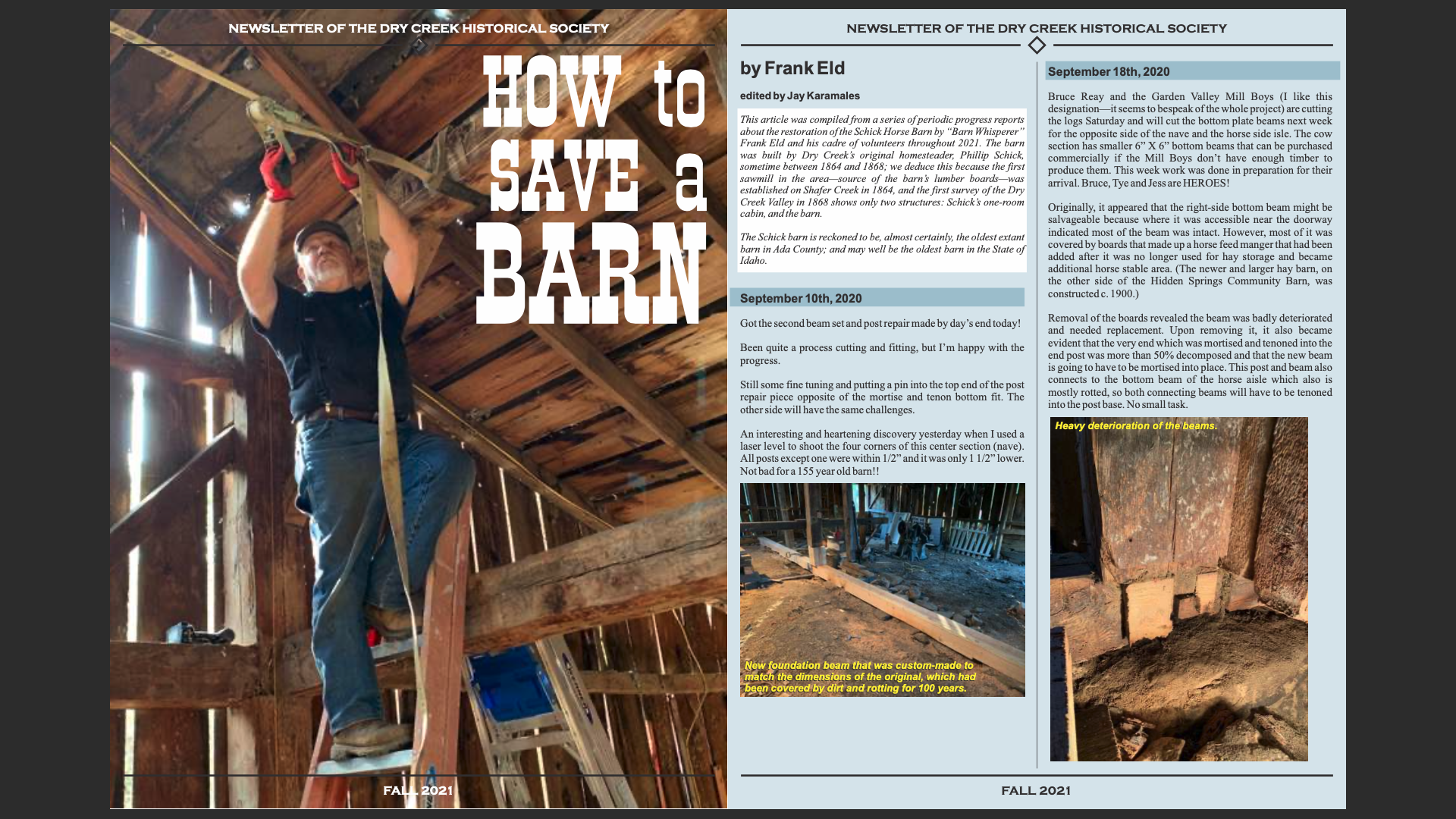

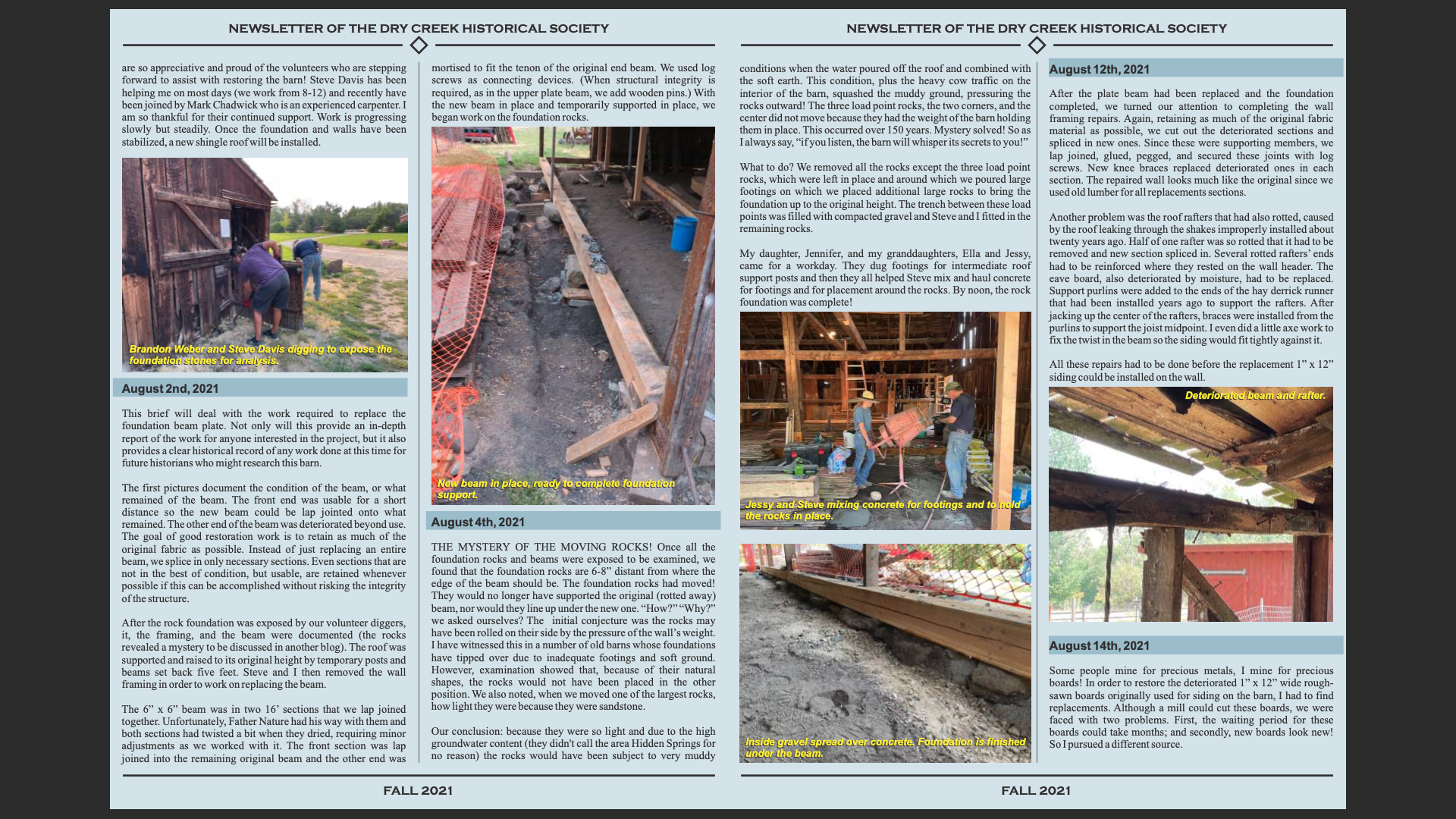
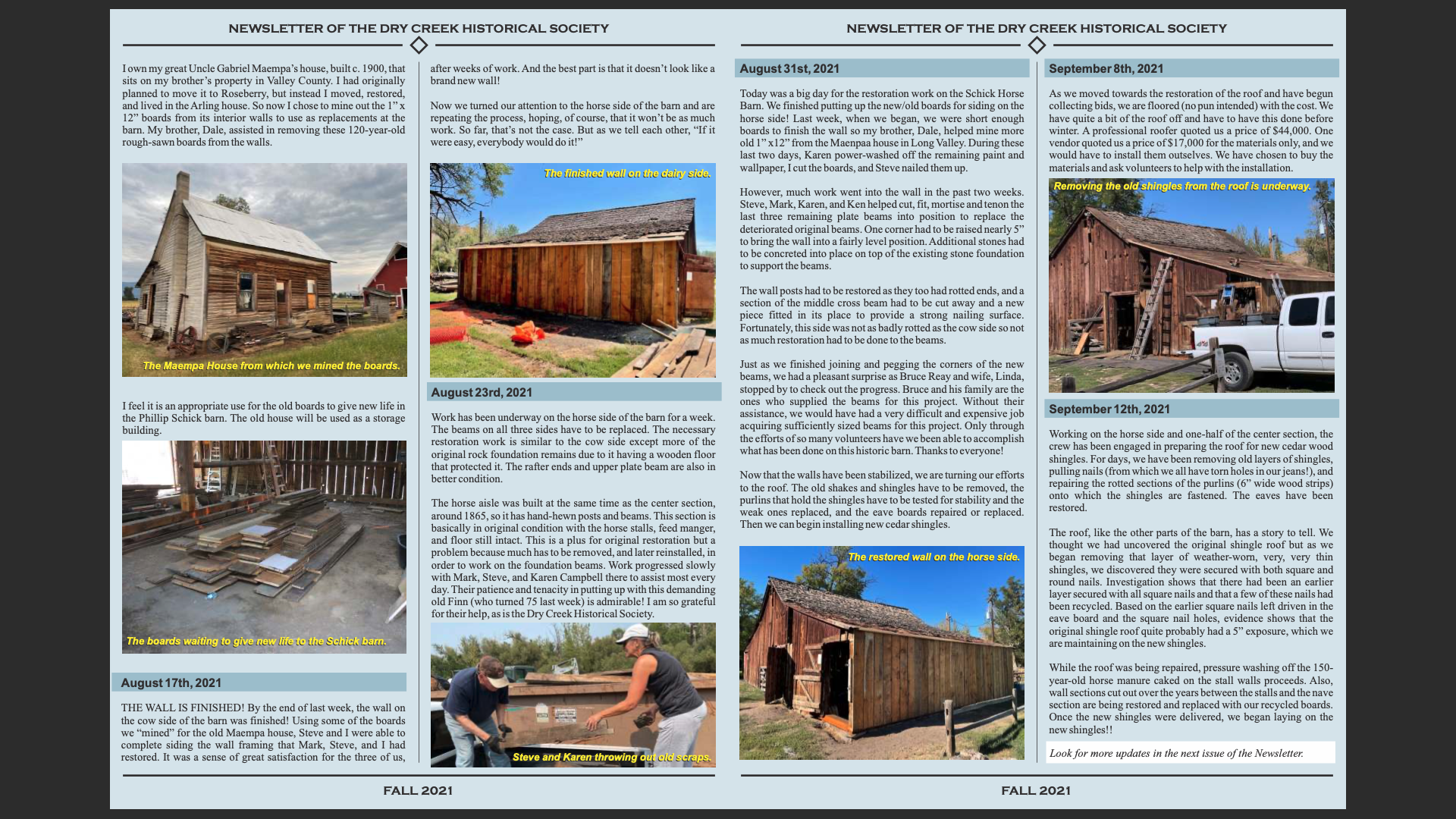
Housing crisis: Demolition begins on depression-era apartments in Boise
by Trevor Fay | Monday, September 20th 2021
BOISE, Idaho (CBS2) — On Monday the Travis Apartment building in Boise was demolished, and some see its destruction as a continuing trend.
Travis Apartments stood on the corner of 17th and Bannock for 83 years. Now, it's being replaced by more expensive housing.
And that's concerning to folks who live around the area. The demolition of the Travis Apartment building immediately started drawing attention from people living nearby.
Ashley Peterson has lived on 17th Street for the past two years. He's a Boise State student who searched high and low for affordable housing in the city.
"With the help of financial aid and those kind of things I was able to finally find a place that I could afford to be in on my own," Peterson said.
But now that more expensive housing is being built across the street from him, he's worried it will speed the increase of his rent. And he's not the only one concerned about rising prices.
"Houses in this neighborhood and existing apartments are at risk of the same kind of thing happening," Katie Fite, a Boise city council candidate, said. "They change hands and the property taxes go up more, and it's almost like a domino effect."
Back in 2019, the Boise city council unanimously approved the construction of the five-story condominium building that will be taking the place of Travis Apartments.
"Piece by piece, rezone by rezone, we are demolishing affordable housing in Boise," David Klinger, a member of Boise Working Together, said. "We are throwing renters out on the street, and we are losing our historic heritage."
For people like Peterson, the future is uncertain. But one thing is clear, there is no easy answer to Boise's housing crisis.
"I don't know what the answer is," Peterson said. "I don't know if there is one answer to any of it. But I don't think that the answer is constantly getting rid of everything that is affordable."
CBS2 reached out to the City of Boise about the demolition of Travis Apartments and the upcoming construction project. So far we've not heard back.
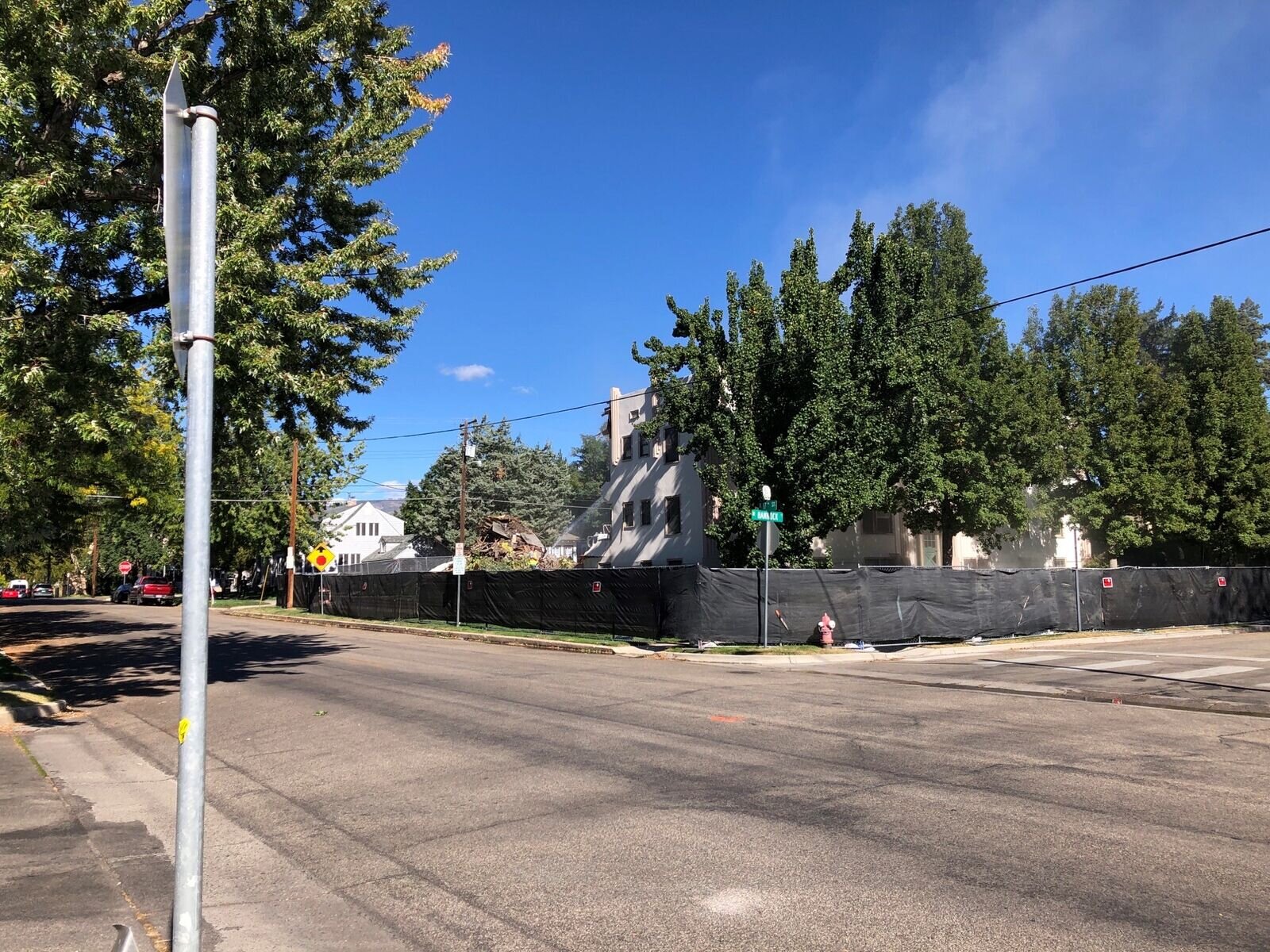
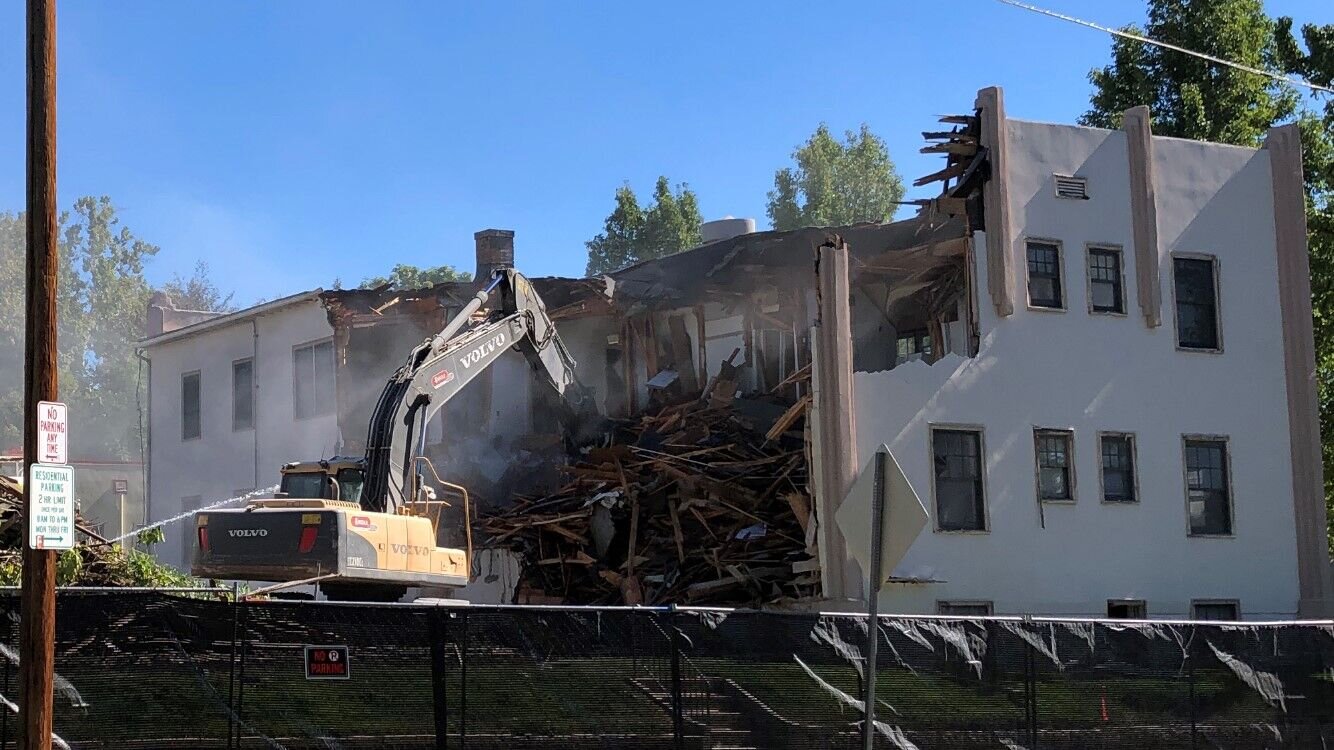
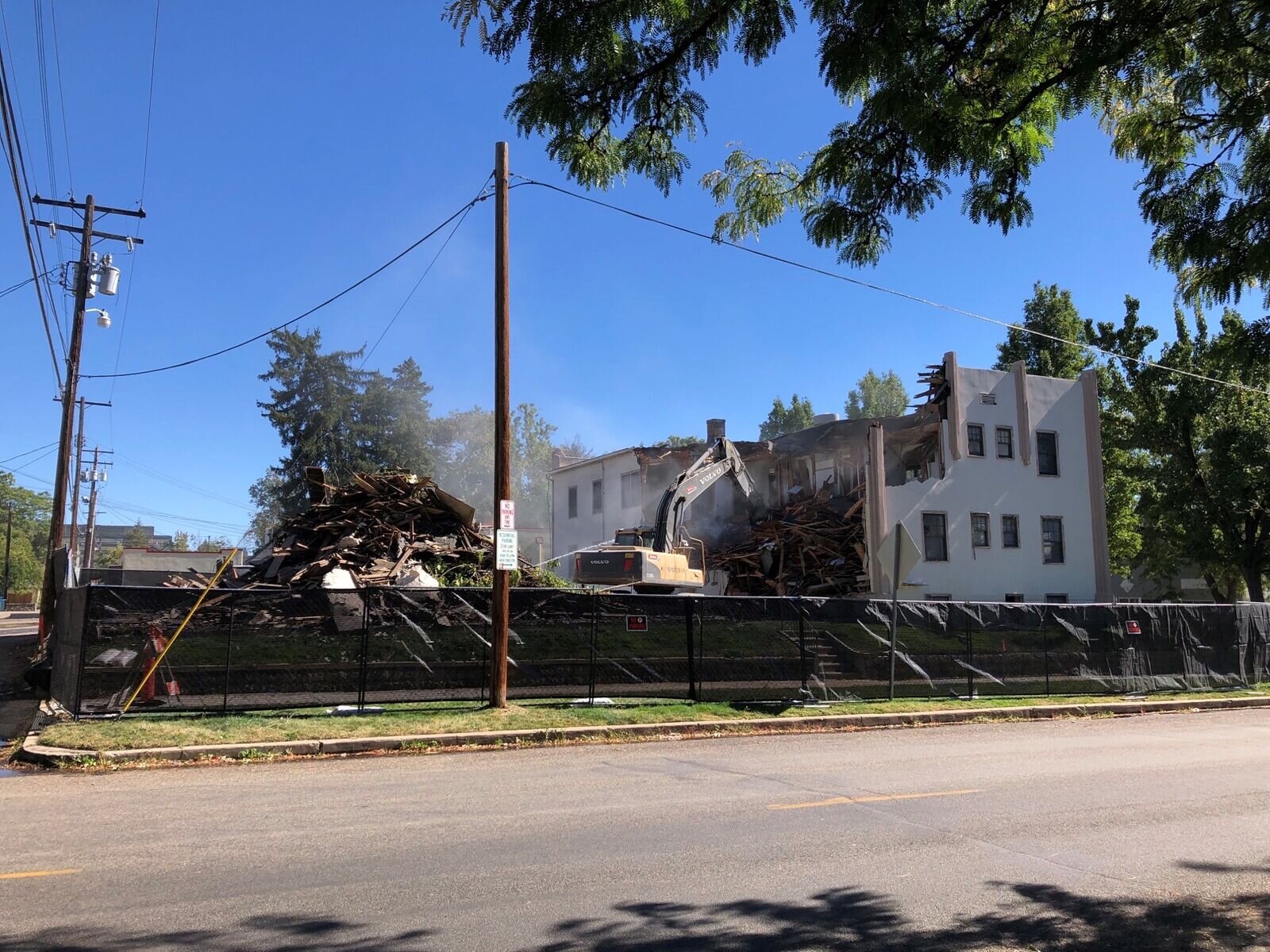
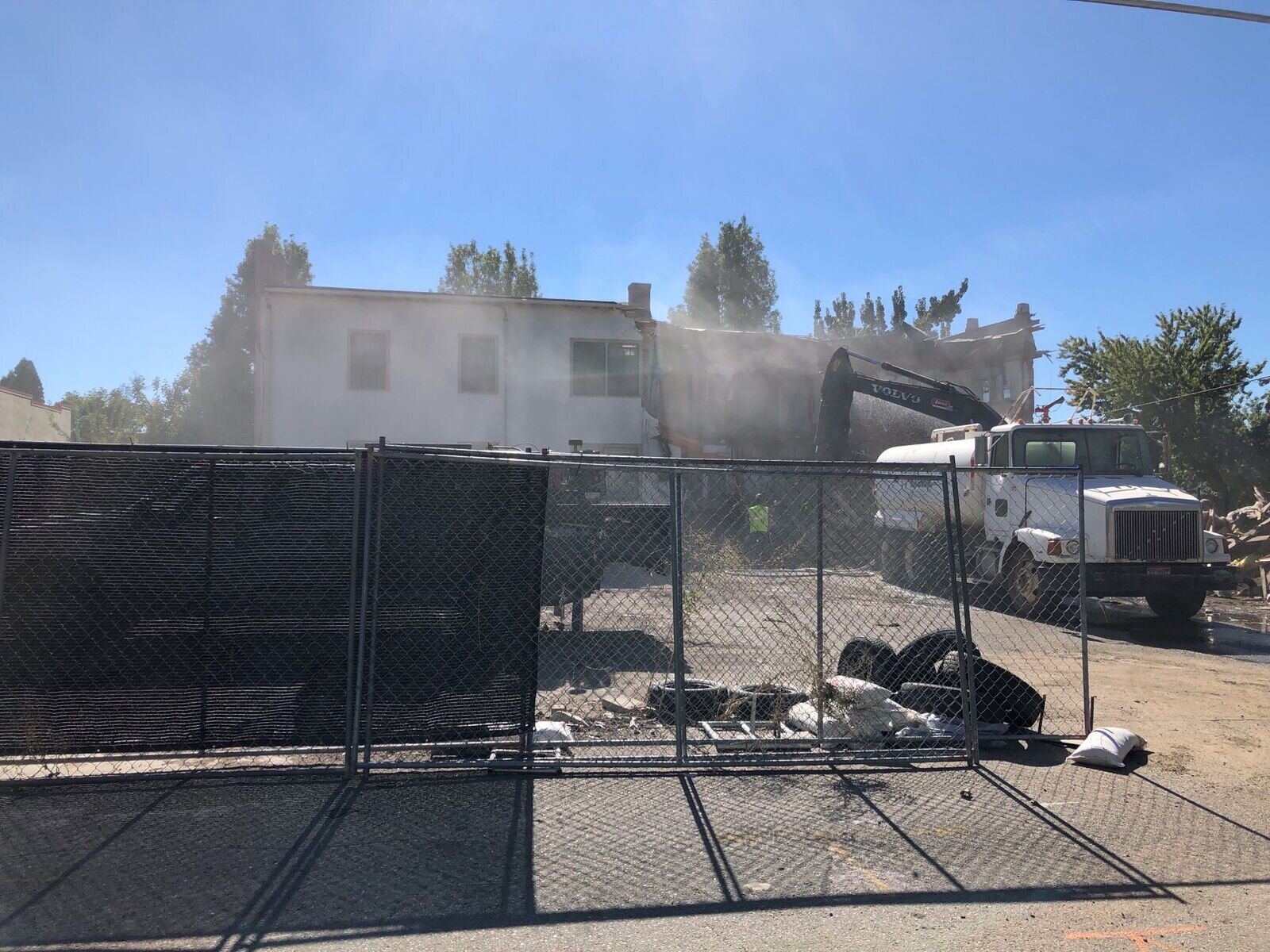
Photos: Trever Fay
For full news article and video visit: https://idahonews.com/news/local/housing-crisis-demolition-begins-on-depression-era-apartments-in-boise
The Idaho Department Store Building
The Idaho Department Store is a Main Street landmark that has witnessed many changes to downtown Twin Falls over its ten-plus decades, including to its own appearance and use, but the biggest change came in December 2020 when the steel claws of the demolition machinery flattened the 115-year-old building to make room for a new multi-story apartment house/mixed-use project.
